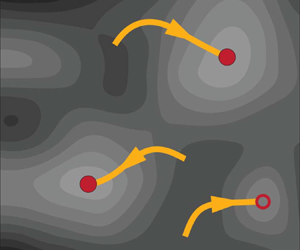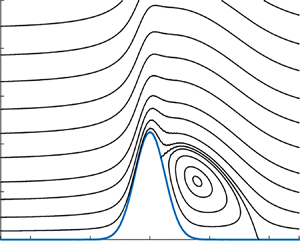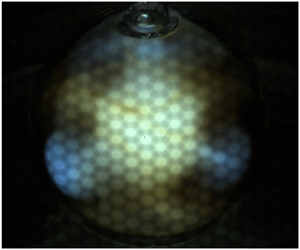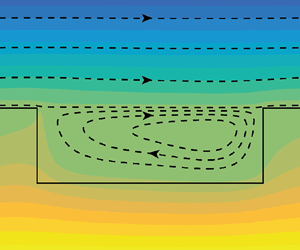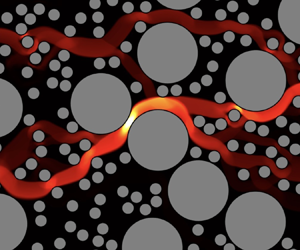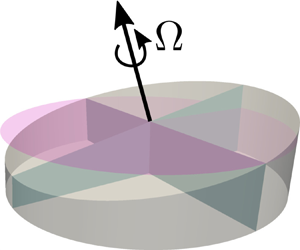Most cited
This page lists all time most cited articles for this title. Please use the publication date filters on the left if you would like to restrict this list to recently published content, for example to articles published in the last three years. The number of times each article was cited is displayed to the right of its title and can be clicked to access a list of all titles this article has been cited by.
- Cited by 6
Identifying invariant solutions of wall-bounded three-dimensional shear flows using robust adjoint-based variational techniques
-
- Published online by Cambridge University Press:
- 12 December 2023, A7
-
- Article
-
- You have access
- Open access
- HTML
- Export citation
- Cited by 6
On boundary-layer receptivity to entropy waves
-
- Published online by Cambridge University Press:
- 25 October 2021, A17
-
- Article
- Export citation
- Cited by 6
Convective instability in a stratified ideal gas containing an acoustic field
-
- Published online by Cambridge University Press:
- 11 March 2021, A25
-
- Article
- Export citation
- Cited by 6
Suppression of viscosity enhancement around a Brownian particle in a near-critical binary fluid mixture
-
- Published online by Cambridge University Press:
- 23 November 2020, A21
-
- Article
-
- You have access
- Open access
- HTML
- Export citation
- Cited by 6
Spreading of a thin droplet on a soft substrate
-
- Published online by Cambridge University Press:
- 21 September 2023, A32
-
- Article
-
- You have access
- Open access
- HTML
- Export citation
- Cited by 6
Slender body theories for rotating filaments
-
- Published online by Cambridge University Press:
- 18 November 2022, A5
-
- Article
-
- You have access
- Open access
- HTML
- Export citation
- Cited by 6
Effect of thermal fluctuations on spectra and predictability in compressible decaying isotropic turbulence
-
- Published online by Cambridge University Press:
- 21 May 2024, A29
-
- Article
- Export citation
- Cited by 6
Fluid mechanics of free subduction on a sphere. Part 1. The axisymmetric case
-
- Published online by Cambridge University Press:
- 27 October 2021, A22
-
- Article
- Export citation
- Cited by 6
Minimal surfaces on mirror-symmetric frames: a fluid dynamics analogy
-
- Published online by Cambridge University Press:
- 19 June 2020, A36
-
- Article
- Export citation
- Cited by 6
A new formulation of a spray dispersion model for particle/droplet-laden flows subjected to shock waves
-
- Published online by Cambridge University Press:
- 28 October 2020, A24
-
- Article
- Export citation
- Cited by 6
A model for the constant-density boundary layer surrounding fire whirls
-
- Published online by Cambridge University Press:
- 06 August 2020, A22
-
- Article
- Export citation
- Cited by 6
A new probability density function for the surface elevation in irregular seas
-
- Published online by Cambridge University Press:
- 06 September 2023, A38
-
- Article
-
- You have access
- Open access
- HTML
- Export citation
- Cited by 6
Continuous parametric families of stationary and translating periodic point vortex configurations
-
- Published online by Cambridge University Press:
- 30 October 2007, pp. 393-411
-
- Article
- Export citation
- Cited by 6
Heat transfer increase by convection in liquid-infused surfaces for laminar and turbulent flows
-
- Published online by Cambridge University Press:
- 26 April 2022, A9
-
- Article
-
- You have access
- Open access
- HTML
- Export citation
- Cited by 6
Yielding to percolation: a universal scale
-
- Published online by Cambridge University Press:
- 31 January 2024, A14
-
- Article
-
- You have access
- Open access
- HTML
- Export citation
- Cited by 6
Richtmyer–Meshkov instability with a rippled reshock
-
- Published online by Cambridge University Press:
- 27 July 2023, A3
-
- Article
- Export citation
- Cited by 6
Viscosity measurements of glycerol in a parallel-plate rheometer exposed to atmosphere
-
- Published online by Cambridge University Press:
- 26 July 2023, A2
-
- Article
-
- You have access
- Open access
- HTML
- Export citation
- Cited by 6
Axisymmetric instabilities between coaxial rotating disks
-
- Published online by Cambridge University Press:
- 01 September 2006, pp. 293-318
-
- Article
- Export citation
- Cited by 6
Wall-bounded thermal turbulent convection driven by heat-releasing point particles
-
- Published online by Cambridge University Press:
- 15 December 2022, A41
-
- Article
- Export citation
- Cited by 6
The unsteady lift on a swept blade tip
-
- Published online by Cambridge University Press:
- 26 April 2006, pp. 87-101
-
- Article
- Export citation
